Materials

Clay
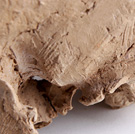
The sculpting begins with the preparation of a clay model. Clay is a sedimentary rock and is commonly found around large pits in the ground. It is made of feldspar or granite rocks and contains, among other things, silty minerals, quartz, feldspars and colloidal materials. The colour of clay depends on the content and oxidation of colloidal particles of hydrated iron and manganese oxides. Under oxidizing conditions colours from yellow through red to brownish prevail. Clay has been used since the oldest times of human activity and, according to some accounts, God made man from clay. Clay can be transformed to imitate almost any material. Its surface can be finished with any desired colour or texture. For our works we import the very best grades of clay from Germany.
Plaster
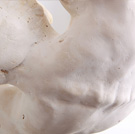
As the next step, a negative impression is taken off the model formed in clay. Plaster is a common mineral used as mortar material because it absorbs water and hardens easily. After protecting the negative we fill with another layer of liquid plaster. When it sets, the negative mould is removed and we obtain the duplicate of the clay form - the positive cast. Once the necessary retouching is done, the positive plaster cast is ready for further working.
Silicone
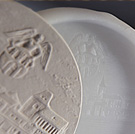
Next, liquid silicone is poured over the plaster model and, after setting, forms an elastic rubber-like mould. Silicone is a synthetic material composed of polysiloxanes and silicone resins.
Wax
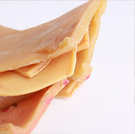
The silicone mould is filled with melted wax. For this purpose, we use wax made of equal parts of beeswax, paraffin wax and rosin.
Bronze
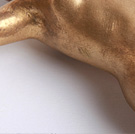
A hollow chamotte mould formed around the wax positive is filled with molten bronze at a temperature of 1,000 C and, once the bronze has hardened, shattered. Then, the resulting cast is polished and patinated. In antiquity bronze was an alloy of 90% copper and 10% tin, when used for making everyday goods, or 86% copper and 14% tin for ornaments. In Europe, copper was extracted from shallow outcrops or by using primitive mining methods. To produce the ore, craters were cut in a rock basement. After extraction, the ore was pre-treated at the site (sorting, initial cleaning, grinding to smaller pieces). Next, the ore was roasted and smelted in bloomeries. Tin was most frequently obtained from alluvial deposits. In our work we typically use one of the bronze alloys suitable for casting.
Patination
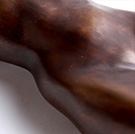
During patination, the surface of the sculpture is covered with potassium polysulphide under high temperature. Patination gives the work a refined look. It is the last step in creating a sculpture work.
Precious metals
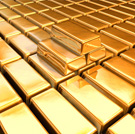
At the client's request, the sculpture may also be coated with a layer of precious metal, such as gold, silver or platinum. To do this we use a process of electroplating.
